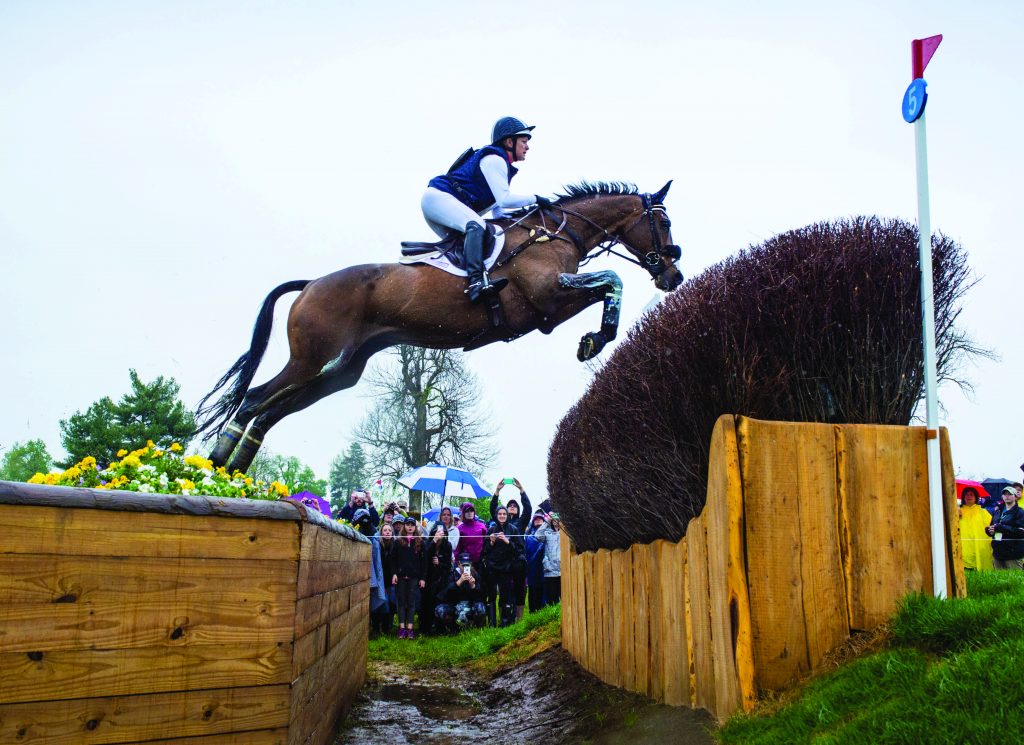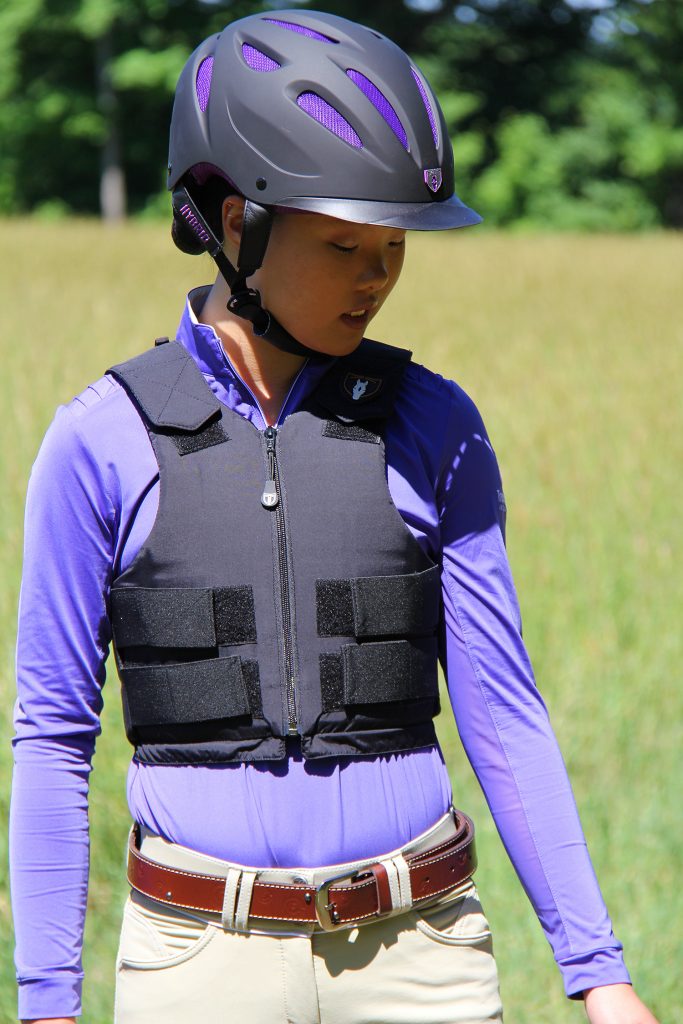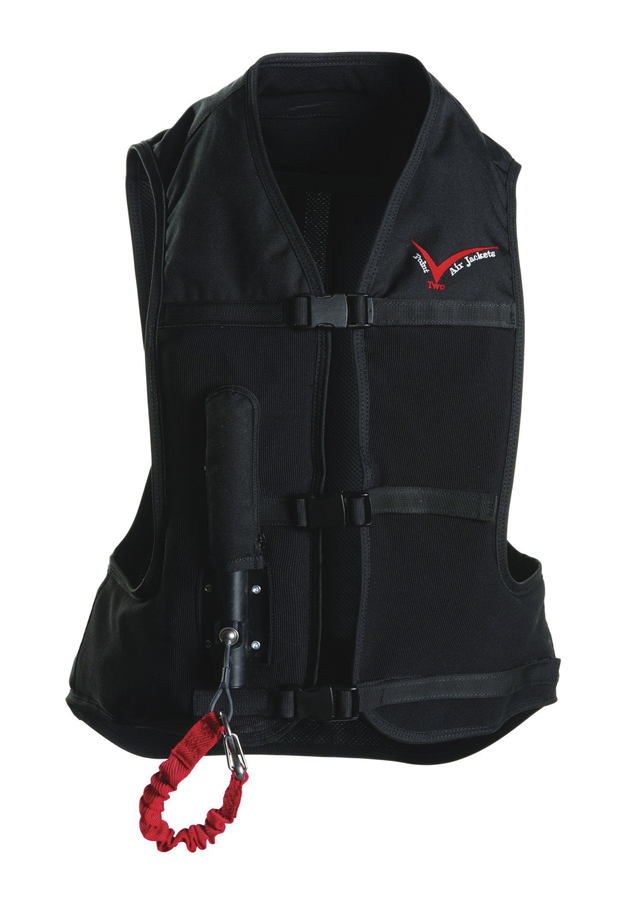Three-day event riders on cross-country courses have long enjoyed the added coverage and confidence provided by the two main types of riding vests on the market today: traditional body protector vests and inflatable vests. At competitions, a protective vest is required to be worn in warmup for and during the cross-country test at any level. An inflatable vest is permitted in competition when worn over the traditional protective vest.
While neither of these vests is required to be worn during everyday riding in any discipline, we’ve witnessed an uptick in riders across equestrian sports choosing to wear one for added safety. We’re seeing these products in schooling rings, at the highest levels of showjumping competition, in the hunter ring and during dressage competitions—no USEF rule prohibits their use in front of a judge. Often these vests are used while working with young or fractious horses, during rider injury rehabilitation, and even on trail rides. The extra protection offered by this equipment has proven to be an asset. Some parents choose to have their children wear a body protector during regular lessons.
Body Protector Vest
This type relies on foam to help dissipate shock and lessen severity of injuries in the event of a fall. It is designed to protect the rider’s abdomen, internal organs, chest and ribs, and it offers a degree of protection against potentially dangerous objects while riding. These vests flex with the rider and allow for full mobility in various riding positions.
Outer fabrics are durable and give riders a chance to express personal style for those models in which colors or custom colors are available. Correct sizing to achieve accurate coverage is essential and is determined by a series of simple measurements. For a detailed description on fitting a protective vest, refer to our article here.
Inflatable Vest
An air vest is generally not considered to be a replacement for a traditional body protector vest. It is worn over a body protector vest to provide increased impact protection in the event of a fall.
An air vest has a cord or a lanyard that attaches to the saddle. If the rider is ejected from the saddle, the cord or lanyard triggers the vest’s activation device, which is fueled by a CO2 canister. In turn, this action punctures the air canister, which instantly releases air to inflate the vest before the rider hits the ground.
Most air vests have protection zones which include chambers around the jaw to stabilize the head and neck, a protective area around the thorax and torso, and an area across the chest to protect the sternum and ribs. Some models have cushions to protect the rider’s hips.
While the air vest is reusable, after deployment a replacement canister must be installed. Outer fabrics are tough, wipe clean easily and are mostly black with some limited color options available. Sizing is simple and runs according to a rider’s weight and height.
Browse our entire selection of safety vests here.
Do you ride in a safety vest? Share your action photos with us on Instagram and Facebook by tagging @doversaddlery!




